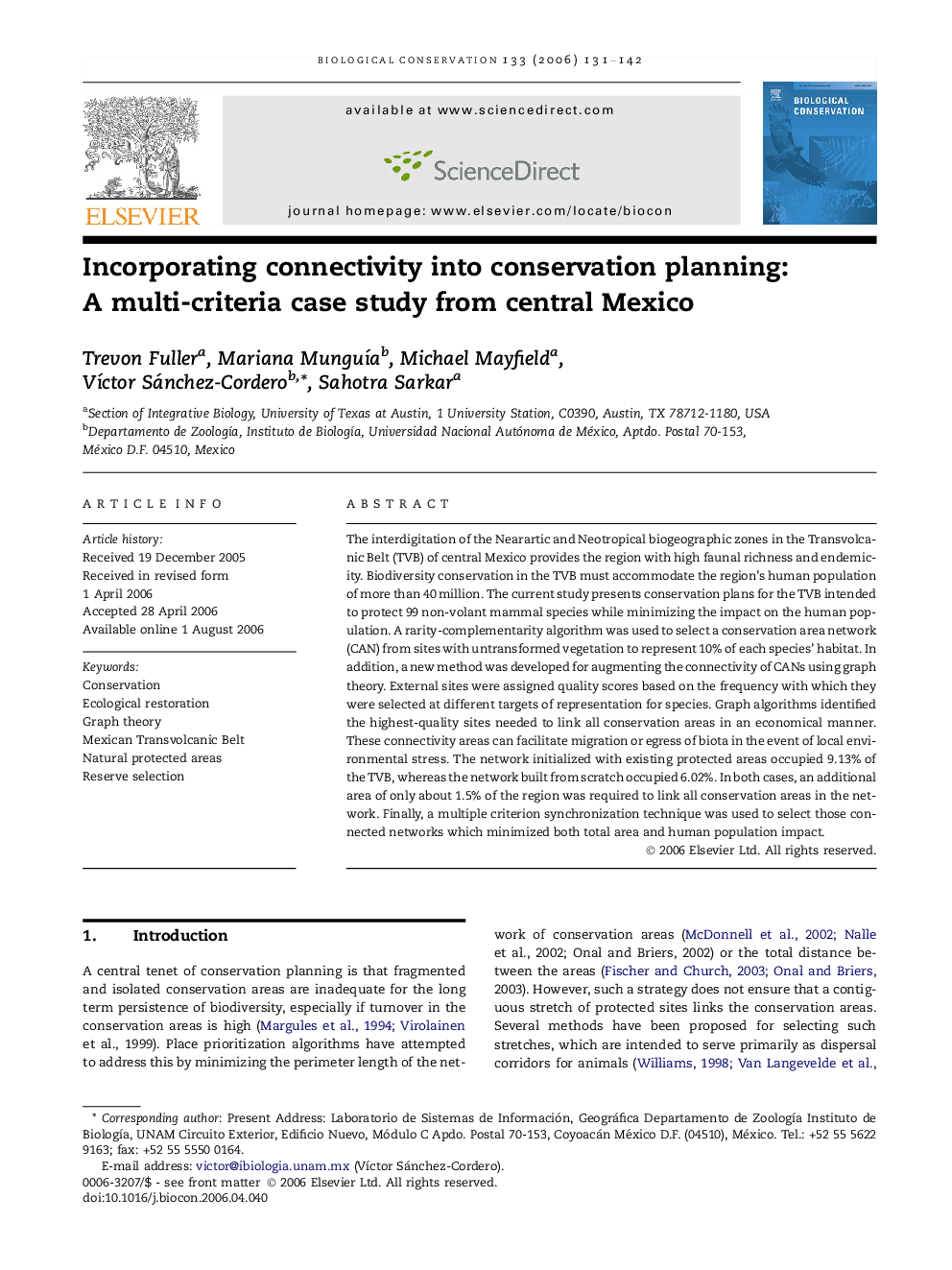| Article ID | Journal | Published Year | Pages | File Type |
|---|---|---|---|---|
| 4387596 | Biological Conservation | 2006 | 12 Pages |
Abstract
The interdigitation of the Nearartic and Neotropical biogeographic zones in the Transvolcanic Belt (TVB) of central Mexico provides the region with high faunal richness and endemicity. Biodiversity conservation in the TVB must accommodate the region's human population of more than 40 million. The current study presents conservation plans for the TVB intended to protect 99 non-volant mammal species while minimizing the impact on the human population. A rarity-complementarity algorithm was used to select a conservation area network (CAN) from sites with untransformed vegetation to represent 10% of each species' habitat. In addition, a new method was developed for augmenting the connectivity of CANs using graph theory. External sites were assigned quality scores based on the frequency with which they were selected at different targets of representation for species. Graph algorithms identified the highest-quality sites needed to link all conservation areas in an economical manner. These connectivity areas can facilitate migration or egress of biota in the event of local environmental stress. The network initialized with existing protected areas occupied 9.13% of the TVB, whereas the network built from scratch occupied 6.02%. In both cases, an additional area of only about 1.5% of the region was required to link all conservation areas in the network. Finally, a multiple criterion synchronization technique was used to select those connected networks which minimized both total area and human population impact.
Related Topics
Life Sciences
Agricultural and Biological Sciences
Ecology, Evolution, Behavior and Systematics
Authors
Trevon Fuller, Mariana MunguÃa, Michael Mayfield, VÃctor Sánchez-Cordero, Sahotra Sarkar,
